Greetings! You have published several books and articles in Russian, but Western audiences may not know of your work since “Gap” is your only work available in English; could you introduce yourself and your work to our readers?
Greetings! I am a founder of Russian-speaking community “Svarte Aske – Dark Ash-tree”, dedicated to the Left-Hand Path in the German-Scandinavian and Slavic traditions, as well as the study of Pagan Traditionalism. I was also the editor of «Svarte Publishing» traditionalist publishing, and a writer. My main areas of interest are Pagan Traditionalism in the Iron XXI century, the social and political dimension of paganism in history, Plato and neo-Platonism, the German-Scandinavian tradition, the German mystic Meister Eckhart and the philosophy of the XX century – as for example the brothers Jünger and Martin Heidegger.
The book «Gap» is one of my earliest and strictly esoteric experiments to take a look at and describe the Left-Hand Path in Odinism. It is a declarative text and I view it as a first glance, the first experience of a special mood of this Path which is different from the conventional. The book was published in Russian in the spring of 2013 so a lot of time has passed and a lot has changed and become evident, more convincing. Unfortunately these materials are only available in Russian for now.
What draw you first to the study of Paganism, and more concretely, Odinism?
I initially got into esoteric hobbies taken from the books of Dobroslav (A. Dobrovolsky) after I stole a book on Norse mythology from a library, to get acquainted with the German tradition. I was 16-17 at the time. It turned out that my ancestors are continental Germans and had roots to Schwarzwald, Bavaria and Swabia. I followed their tracks to the dawn of the XVIII century. But the historical and political vicissitudes of fate threw my family in Siberia. I see this as a particular journey through time, geography and people, and even from this position I build a bridge back to the German Logos. This predetermined my entry into the German-Scandinavian tradition. I view it as a tree-crown or a beautiful opened flower, raised from the general archaic German seed.
My further formation of the pagan worldview was influenced by the works of Veleslav Cherkasov, with his poetic descriptions of the sacred, and also by writings of Julius Evola and his furious criticism of modernity.
René Guénon is obviously a big influence in your work, but could you mention other sources of inspiration? Who would you consider the father of modern Odinism?
I respect René Guénon as the founder of the philosophy of Traditionalism in the first half of the XX century and I share his criticism of our time, but I can’t say that his influence on me is very big. In the book I argue and criticize his view of the three stages of global regression. René Guénon defended the dualistic conception of good and evil, in many respects similar to the Christian, and for the Left-Hand Path and paganism in general this is unacceptable. Julius Evola had a much greater impact on me, his views are the basis of many of my intentions.
The Russian paganism (Rodnovery) has been nothing like the cults and philosophy of the Left-Hand Path, historically speaking. There is the question of how it could be if it was expressed through the use of the Russian language and Slavic images, culture, folklore and myth? Nowadays the answer is suggested by Veleslav in his many books and a series of articles and lectures. I find his works extremely saturated, arguable, but interesting and important for the Pagan Traditionalism in Russia. He is well versed in Western Hermeticism, but brings to texts a part of Russian spirit, nuances and tones. In the book «Gap» I tried to convey and transfer the mood of his books to the space of Norse mythology. In the end, he is also my good friend and helper.
Regarding modern Odinism, I do not know who could be called its founder. In the same way, of course, its father is Odin known as Allfather. But among people I would like to highlight Sveinbjörn Beinteinsson, the first godi of the Icelandic community “Ásatrúarfélagið”. I find very interesting and in tune with my own ideas the views of Collin Cleary and some concepts of Stephen Flowers.
This is somewhat the core subject of “Gap”, but could you explain your vision of the Left-Hand Path? Some people associate it exclusively with Satanism and black magic, but your approach couldn’t be further from that.
As the famous saying goes: better to see once than hear a hundred times. Therefore, its difficult to describe the vision of the Left-Hand Path, it is important to capture the spirit and impulse of what it talks about. Some form of magic as a mean to influence the material world and bring benefits is of no interest to me, I almost didn’t touch this topic.
About Satanism, I wrote in the preface to the book about it, and I think people must be very faithful to the Christian God and to moral dualism to talk about paganism and link it to words like “Satanism” and the like. It shows a lack of intelligence.
Your approach to the Left-Hand Path is obviously influenced by the idea of Vamachara; how does a Hindu philosophical concept relate to European Paganism?
That’s a very good question. The Left-Hand Path was developed, down to the smallest domestic details, in a variety of Indian schools. It is a fact. And yes, in the case of language and structuralism (J. Dumezil), we have a common Indo-European root, very far and deep. Today many European pagans and mystics try to copy the external attributes of Vedic or Tantric cults without delving into the essence of the Darśana. It inevitably becomes the typical situation where a European in appearance, language and thinking, tries to pass himself off as an Indian, wrapped in cloth and inventing a name for himself. This is a path to nowhere. (People who receive actual initiation in India, learn the language and make pilgrimages to this country compose the positive exceptions. But they belong to the Hindu tradition, not the European.)
I see the situation in the following way. You do not need to borrow the external forms from Tantra as invocations, names and images of the Gods. You do not need to borrow the structure of rituals and ceremonies, it’s a achievements and the manifestations of a purely Indian culture. More benefits can come from comparing the mythology and the gods, but it is not the deepest way.
It is enough to take from the Tantras the most fundamental and basic provisions; they often fit into one sentence or two or three words. For example, the “idea of non-duality” (Advaita) or “divine monism”. There is no need to take anything, but the ideas. The next step should be to search for the roots and the possibility of the disclosure of this idea in the space of European thinking and traditions. This is hugely aided by Plato, neo-Platonism, and some Christian mystics. For example, having plunged into the study of Meister Eckhart and Johannes Tauler, I found a great similarity in their teachings about finding the God within and the hierarchy of the people in the Tantras (Pasha-Vira-Divya). All we need is already within Hellenic and Germanic ideas, their philosophy and traditions. Our task is to free it from the accretions of Christianity, secular modern science, humanism, the idea of progress and so on. Then it should be brought into harmony and learned as language, and in this space of Hellenic-Germanic philosophical language we can express similar ideas to those of the Tantras that are absolutely complimentary to the European way of thinking, its culture and external forms.
India saved their heritage much better than Europe, which lost a lot. Therefore, we should not try to become Hindus and run to the East, we have to look at them like in the mirror and see the differences.
In your book you delve into the darker side of deities traditionally associated exclusively with the Light, giving attributes to Odin or Freya for example that are usually associated with darker entities. Do you agree with that black and white vision of the world, where you have very defined lines separating who is good and who is evil? Is it even possible to attribute such human qualities to immortal beings such as gods and giants?
The only thing that I want to show is that the understanding of the figure of God as just “light” or just “dark” is fundamentally wrong. The gods are ambivalent, they can have their angry or less bright incarnations. Because of Christian culture we are taught to see God as the “good old man”, but the pagan gods – particularly the German! – are severe and are not something for “hippies”. Furthermore, if each divinity can manifest itself in two ways, there is something that precedes duality and integrates the light and dark manifestations even before they show themselves separately. Now, the question is: if the gods may be “light” and/or “dark”, what specifically inside of God precedes its division into two faces?
Is it possible to attribute human qualities to the Gods? There is a beautiful view, the essence of which is as follows: it is not man that transfers his qualities, such as emotions, onto the images of the Gods. On the contrary, a person has these qualities because they have Gods in the first place.
You mentioned the titans and here we can return to the question of “Satanism”. Nowadays it is popular to introduce the worship of the titans, Jötunn and Thurs, as well as a variety of lower spirits, as part of the Left-Hand Path; the so-called Thursatrú or Rёkkatrú. I think this is a naive hobby of housewives and wiccans at best. People who are engaged in it and sing the praises of them, do not understand the logic of the myth and the militant component of the Norse-German tradition, the military ethos and culture of the German Gods. These are vivid examples of when the Left-Hand Path clearly turns the wrong way.
Could you explain the term manifestationism and how it relates to Paganism? Why is Creationism opposed to Paganism?
These are two different ontological principles that distinguish the religions of creationism and pagan traditions. Abrahamic religions are based on the idea of creation of the world from nothing (creatio ex nihilo), but Paganism says the Cosmos was manifested (from the Latin word manifestare – to show yourself) by God and from it (creatio ex Deo). Manifestationism is Paganism.
It is from this fundamental difference that all the differences arise, down to the social, political and ideological, between Paganism and the Abrahamic religions. Succinctly put, creationism claims that there is an insurmountable difference between the nature of God and the nature of the world and man. Paganism states that the difference between the Gods, the world and men is hierarchical, but not essential. Of course, from the standpoint of orthodox creationism this statement is heresy, and that is why creationism has always fought paganism. In the face of paganism, neo-platonism entered Christian theology and Islamic mysticism and rebuilt its structure from within, eliminating the distance between the mystic and God.
To achieve any reconstruction of pre-Christian faith in Europe is very difficult due to the fact that now there is no continuous tradition; the line of Faith has been broken. How do you deal with this problem?
To this issue I have devoted much effort, the result of which is presented in the two volumes of “Polemos: Pagan Traditionalism”. There are more than 800 pages total in which the history, transmission and manifestations of pagan heritage are considered in various fields and examples. Unfortunately only the table of contents is available in English, the rest is still waiting for its translation and publication.
Briefly put, Paganism could be hidden, not visible to us in our everyday life, but in principle it does not disappear. I see paganism not as cult and veneration of the plurality of Gods, paganism is a special way of thinking, a language and a state of being. Yes, today it is very difficult to break through to it, to find adequate forms, books, authors. But with proper effort and responsiveness everything is possible.
You are the founder of the Svarte Aske community, could you please talk us about it? What is it, and what are its goals?
It is a community created in 2011. We celebrate the four most basic solar dates: Summer and Winter Solstice, Vernal and Autumnal Equinoxes. In addition, we are exploring and share the pagan ideas of traditionalism, the Left-Hand Path and philosophy. We publish the almanac “Warha” which regularly translates texts of foreign authors into Russian, and publish interviews with writers and researchers not known in Russia. The last couple of years this educational activity is our main manifestation in the external world.
What are you currently working on, are you preparing any new books?
In the near future the second edition of “Gap” will be released in Russian, this time called “Charming Abyss”. It contains much more material revealing the essence of the teachings and affecting entirely new themes.
I am currently close to complete a complex work on the study of the German Logos “Forthcoming and Encirclement”, which touches the themes of tradition, German mysticism, neo-Platonism, Heidegger, and etymological peculiarities of the German and Russian languages, which is essential for the understanding of the topic. And it’s not the last time we step this way.
Thank you for your time!
Thanks for the interesting questions.











